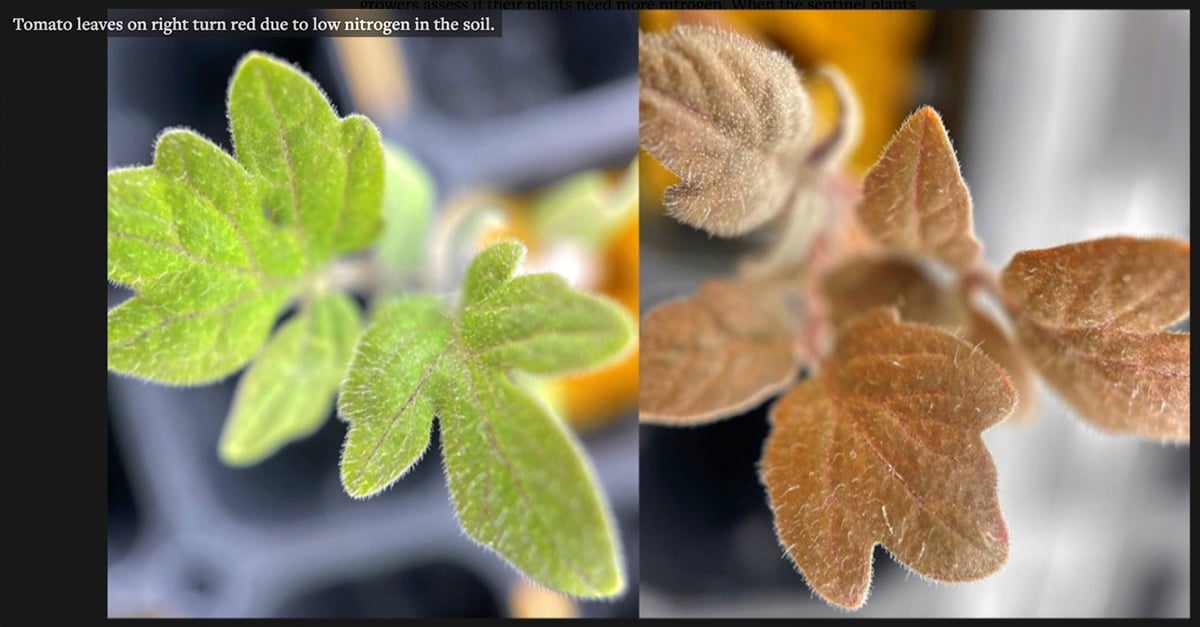VEGREVILLE, Alta. – Few farmers want to return to binders and threshing machines, but most will gladly spend time pitching bundles and driving old equipment to give young people an appreciation of farming history.
Orest Lazarowich spent Oct. 5 shuttling groups of schoolchildren between a clanking threshing machine and a dusty fanning mill to give them a taste of what life was like for their grandparents.
“If kids don’t see this, they’ll think milk comes out of a carton,” said Lazarowich of Vegreville, a volunteer on the Vegreville Regional Museum’s board of directors and one of the workers at the Vegreville Threshing Bee.
Read Also

American researchers design a tomato plant that talks
Two students at Cornell University have devised a faster way to detect if garden plants and agricultural crops have a sufficient supply of nitrogen.
The children took turns cranking the wheel of the fanning mill to separate the chaff from the grain. They were encouraged to chew a few kernels of wheat from the pile of clean grain until it turned into gum, an old fashioned treat.
“We wanted to show them some of the work kids did on the farm,” said Lazarowich.
When he was younger, it was his job to clean the barn every Saturday morning. If it was done in time he would get a dime to go to the movies.
“That was a treat.”
As the machinery ages so do the volunteers who know how to run the equipment.
Dan Kobylynk is one of the few people old enough to remember how the equipment works yet young enough to be able to spend the day pulling the levers on a binder or crawling under the threshing machine to attach the belt.
He was born in Ukraine and immigrated to Canada with his family, which didn’t have enough money to buy modern combines and tractors. The family harvested with a binder and thrasher until 1969, long after most people had abandoned the labour intensive equipment.
“We used antiques. At the time they were cheaper to buy,” said Kobylynk, who spent the threshing bee running between machines to keep the old equipment going.
Throughout the year it’s retired farmer Art Ziegler’s job to organize the dozen or so men who volunteer to repair and maintain the machinery at the museum in the former Agriculture Canada experimental farm. Every week day for 10 years, Ziegler has organized the crew of workers who rebuild, paint and restore rusty old farm equipment donated by local farmers.
“I just tell them what to do and hope they do it,” said Ziegler, who encourages the crew with coffee and doughnuts.
If there are no pressing jobs, the volunteers just have a “gab session” in the back room, said Ziegler’s son, Deryk.
Steve Kereliuk of Vegreville knows the importance of the museum to the community. After four hip operations he’s not able to crawl over equipment, but still feels it’s important to volunteer his time. This year he kept the grass mowed and organized the museum’s sports hall of fame.
What the museum needs is younger workers who can merge into the volunteer pool, he said. “Us older people are slowly petering out.”
Despite the small pool of aging volunteers Kereliuk still enjoys the satisfaction and friendship of working together to put on the threshing bee.
“I love this sort of thing.”














